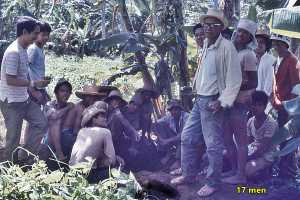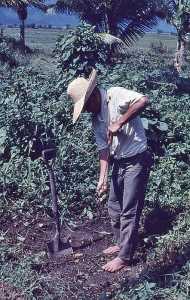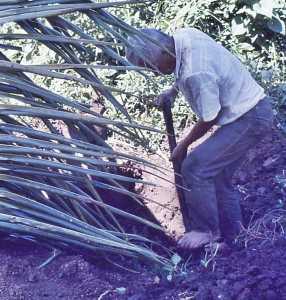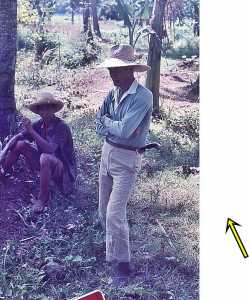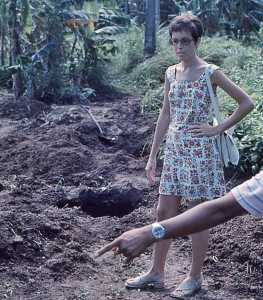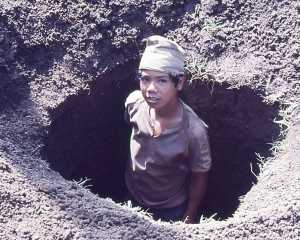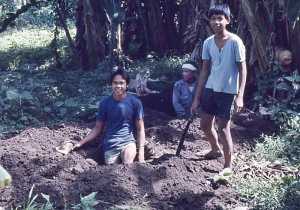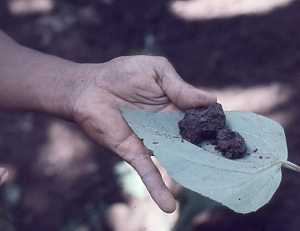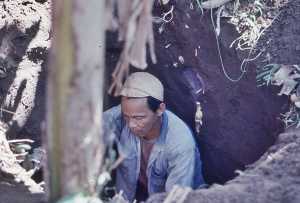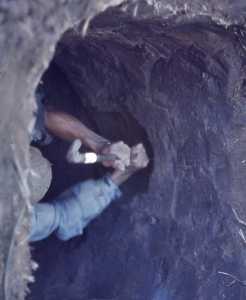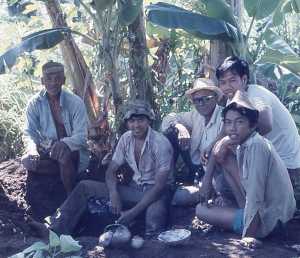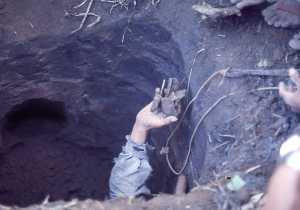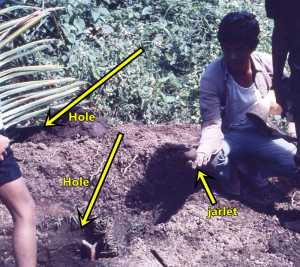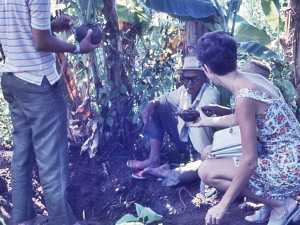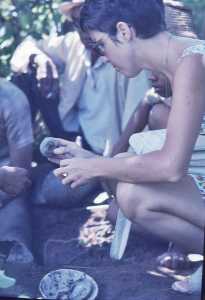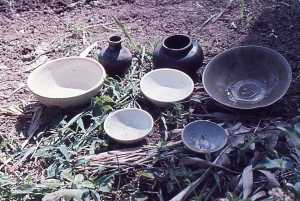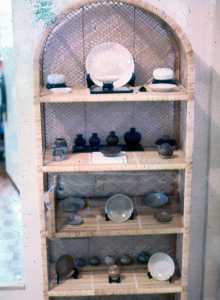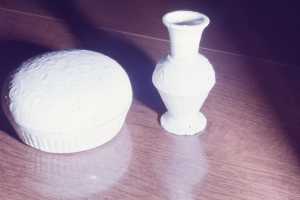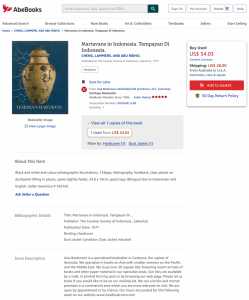The Chinese and Asian Art Forum. For Fans, Collectors and Dealers.
 Basic Rules For the BidAmount Asian Art Forum: Talk about whatever you want. You can even discuss and offer things that are for sale if they are authentic. Maximum image file size per post is 2 MB. Images of 700pxl x 700pxl are optimal if saved at a medium resolution. Be respectful of others and enjoy yourself. Click the YouTube link for a brief tutorial on using the forum. You can also EMBED Videos by cutting and pasting from You-Tube, Vimeo etc.
Basic Rules For the BidAmount Asian Art Forum: Talk about whatever you want. You can even discuss and offer things that are for sale if they are authentic. Maximum image file size per post is 2 MB. Images of 700pxl x 700pxl are optimal if saved at a medium resolution. Be respectful of others and enjoy yourself. Click the YouTube link for a brief tutorial on using the forum. You can also EMBED Videos by cutting and pasting from You-Tube, Vimeo etc.
NOTE: To post an item or add a new post, click open the category title from the FORUM LIST, and CLICK the Blue ADD TOPIC button.
In 1975 my family lived and worked in the Philippines. I was a GS-9 working at Clark Air Base, American High School. This was after 3 years in Japan (Misawa and Camp Zama Tokyo). I knew from my reading that there were lots of Chinese Yuan wares and I was anxious to find some. After some months My wife and I went on this trip - by bus, jeepny, and some boat.
Philippines: the first 4 pictures. We were going down the main Island of Luzon south of Manila. The first samples of Chinese finds were in the 1920s. Then during street work in Manila were found 1500 pieces of pottery. Some were as old as Northern Song, mostly Yuan and Ming. Farmers working along the rivers what fed into the sea started to find shards while walking the fields. First slide near a Copra Plantation -where we went on the edge of farm land. This area contained grave sites with mostly 14-15th century graves. The men gathered in the morning to begin to dig. some were men and young boys. One picture is with the "manager" using a long ROD to press into the ground looking for something solid. This is very tricky. It was easy to break pots. If the found something they started to dig.
Everyone but the manager were without even sandals. there is a man with a bolo knife like a machete - only used in the Philippines (lots of brush and palm leaves to cut - for shade). Another group with ME and men and boys - one man on left is deep in a hole. The 3rd pix shows the farm land in the background - as they were on the edge of the Copra operation. Finally an arm points out a hole to my wife - you can see many holes behind her, close together. It was dangerous to even walk around out there because the holes were much taller than a man. (SORRY but I can't seem to arrange the photos in order of the text)
There was digging all around the area - with others coming and going.1st is 3 boys digging together. Next a very young boy deep in a hole - and it will get over his head. Third show a a man with some bone fragments on a leaf. There were seldom any remains after 600 years. finally a man in a deep hole. Notice that he is working on the SIDE of the dig. They dig the hole on the side of the finding-rod, so that they won't break pottery as they dig right under them. There were often several holes in the side of every hole.
These next pictures are different men showing something they had just dug up. Notice how dirty they are. Later they would take them into the bamboo house to clean them up. #1 shows the man in a VERY deep hole while digging into the side wall. #2 a group of men with several finds. #3 a man in very deep hole again and showing a small brown-ware jar. #4 a man so deep he can't reach the rim, holding some shards. Much of the Yuan soft white (Marco Polo) ware is pre-porcelain and very easy to break- therefore lots of shards.
The first picture shows the "boss" showing my wife what looks like an Ochre ware bowl and a man standing on the left with a larger Ovoid jar. #2 She studies a small Ochre ware jar. #3 some items from the day for my inspection (I took 3 of these) and finally some similar ones I collected up to that trip in my home in CAB - sorry the pictures are so poor.
For those who are interested in this kind of wares (many different types, and kilns and time periods) you might try to find a copy of the Book: Oriental Ceramics Discovered in the Philippines. It's very hard to find. The first edition (1967) was withdrawn because of many mistakes by the authors - Leandro and Cecilia Locsin. The second edition came in 1970 with much better expert help and excellent pictures including some color. (Charles E. Tuttle - Tokyo Japan). I looked for YEARS to find one. Dealers are still looking for the second edition. I did find one about 15 years just by chance. Finally the digitized book of the first edition is on Google Play. #
1 the book cover - and a few bottles of MANY in my Philippine collection.
It's interesting that in the 50 years since I left the Philippines I rarely come across the "Marco Polo" ware which I like. The boxes yes - but other hardly seen. The ware is proto porcelain with creamy color and many colors of glaze. Uncolored rim and foot. All from Yuan period. Example covered box lit about 10cm - with scrolling vines and mismatched bottom, Last with similar small vase (poor old picture). BTW, there is a larger example of the covered box above in the V&A London.
Thanks for looking. Please, comment or question.
Thank you for sharing some of the history of your adventure with us!
I second that! Thank you so much. It looks absolutely fascinating and such nice pieces. Did the holes ever collapse on the diggers?
Yes, unfortunately the holes killed quite a few men and boys especially in the typhoon and rainy seasons. In some pictures you can clearly see how deep they went for any item. American, and Japanese money was great for the economy, and especially the very poor farmers who were almost slaves on those plantations. And illegal digs were common. The advantage for the jungle trip was to skip the middle man. AND- I wanted to be sure that the stories of the digs were true and that they were coming right out of the ground - so I know they are authentic!!
I believe the digs still go on.
David
I forgot to mention the problem of the cave-in of the holes which killed quite a few men and boys especially in the typhoon and rainy seasons. In some pictures you can clearly see how deep they went for any item. American, and Japanese money was great for the economy, and especially the very poor farmers who were almost slaves on those plantations. And illegal digs were common. The advantage for the jungle trip was to skip the middle man. AND- I wanted to be sure that the stories of the digs were true and that they were coming right out of the ground - so I know they are authentic!!
I believe the digs still go on.
David
It's interesting you brought that up. -The only reason we HAVE the pottery is because they WERE buried. The pottery were buried near by of ON the body buried. AND the best pottery found points to the higher rank of the person. Also, some tribes needed pottery that held water. In the early 1200-1400s they had no way to keep water or wine etc. for a longer time than with their own wood or primitive pots. The very best was The very large Dragon jars which were the highest status in the tribes and were revered for centuries. Most were brown or orchre glazed.
David
Thanks for visiting "The BidAmount Asian Art Forum | Chinese Art"
If you sell on eBay, or have a shop feel free to post images and descriptions and links.
Check back often for discussion about the latest news in the Chinese art and antique world. Also find out about the latest Asian art auctions at Sotheby's, Christie's, Bonhams and Tajans.
Auction results for: fine porcelain, ceramics, bronze, jade, textiles and scholar's objects. As well as Japanese, Thai, Vietnamese and other Asian cultures.
Thank you,
Peter Combs
Topics and categories on The BidAmount Asian Art Forum | Chinese Art
Kangxi vases, Kangxi dishes and chargers, Kangxi ritual pieces, Kangxi scholar's objects, Qianlong famille rose, Qianlong enamels, Qianlong period paintings, Qianlong Emporer's court, Fine porcelain of the Yongzheng period. Chinese imperial art, Ming porcelain including Jiajing, Wanli, Xuande, Chenghua as well as Ming jades and bronzes.
The BidAmount Asian Art Forum | Chinese Art
A free Asian art discussion board and Asian art message board for dealers and collectors of art and antiques from China, Japan, Korea, Thailand, Cambodia, Vietnam and the rest of Asia. Linked to all of the BidAmount Asian art reference areas, with videos from plcombs Asian Art and Bidamount on YouTube. Sign up also for the weekly BidAmount newsletter and catalogs of active eBay listing of Chinese porcelain, bronze, jades, robes, and paintings.
The art of calligraphy - and for the ancient Chinese it certainly was an art - aimed to demonstrate superior control and skill using brush and ink. Calligraphy established itself as one of the major Chinese art forms during the Han dynasty (206 BCE - 220 CE), and for two millennia after, all educated men were expected to be proficient at it.
The Museum’s collections of Asian art span nearly five millennia and encompass the cultures of China, the Himalayas, India, Japan, Korea, and Southeast Asia. In 2007, the Museum launched an initiative to create dedicated galleries for the collection, beginning with a gallery for the arts of Korea ...
Chinese art is full of symbolism, in that artists typically seek to depict some aspect of a totality of which they are intuitively aware.
China Online Museum is the finest online museum of Chinese art. It features Chinese calligraphy, painting, ceramics, bronzes, carving, and other artworks.
Chinese Ceramics & Works of Art. Overview Upcoming auctions Contacts Auction results ... Christie’s sales of Chinese ceramics and works of art showcase centuries of Chinese history. Held throughout the year in London, New York, Paris and Hong Kong, they attract a wide audience of collectors and connoisseurs vying for pieces as diverse as ...
Explore Asian Art Week. Contact the Specialist Department. Chinese Paintings ... Senior Specialist, Head of Sale. [email protected]. Tel:+1 212 641 5760. Bid in-person or online for the upcoming auction:Fine Chinese Paintings on 10 September 2019 at New York. Bid in-person or online for the upcoming auction:Fine Chinese Paintings on 10 ...
Discover an abundance of must-see art from all corners of a vast continent at Christie’s NY Asian Art Week. From contemporary classical and Chinese paintings to works with exemplary provenance from the Art Institute of Chicago, our Rockefeller Paza galleries will be full of ancient treasures and contemporary masterworks in a salute to the vibrant arts of Asia.
Sold to benefit The Art Institute of Chicago’s Asian Art Acquisition Fund, the sale features 84 lots with a focus on Ming and Qing porcelains, and offers a rare insight into the taste for collecting Chinese ceramics and works of art in the Midwest from the end of the 19th century through the 1980s. Highlights include two Wanli wucai garlic-head vases, a Qianlong mark and period, blue and ...
Specialist, Chinese Paintings, Christie's London Dr Malcolm McNeill is a Specialist in Chinese Paintings at Christie’s, based in London. He previously worked as an assistant curator of the Chinese collections and the Victoria and Albert Museum in London, as a researcher at the British Museum, and as a translator and tour guide at the National Palace Museum in Taipei.
The Christie's Education 2020 Conference: The Chinese Art Market 18 Jun 2019 Christie’s Education is delighted to announce our first international academic conference in Asia which will take place in Hong Kong from 26-27 November 2020 at the Hong Kong Convention and Exhibition Centre and will run in parallel with Christie’s Hong Kong Autumn Auctions.
The summer Chinese Art sale in Hong Kong will feature works of art from several private collections, including Qing porcelains and textile from the collection of the legendary Chinese art dealer A. W. Bahr (1877–1959), fine gilt bronze Buddhist sculptures from an old Hong Kong collection, an East Asian collection of Qing dynasty wine cups and jades, and a Japanese collection of Song ceramics ...
Sotheby's Chinese Works of Art Department holds two auctions each year in London, New York, Hong Kong and Paris.
Chinese Art - View Auction details, bid, buy and collect the various artworks at Sothebys Art Auction House.
With more than 340 Chinese works of art dating from the Neolithic to the Republic periods, highlights of this sale include a selection of Qing Imperial monochromes from the collection of Arnold and Blema Steinberg, early ceramics from the Art Institute of Chicago and Chinese porcelain and works of art from the collection of Henry Arnhold.
Results: Sotheby's Asia Week achieved $52.4 million in six strong auctions, exceeding pre-sale estimates. With 76.5% of lots sold and 60.3% of lots surpassing high estimates, the Asian art sales at Sotheby's indicate continued collector interest in the finest works of art from China, India and and the Himalayas.
Today's sale of Important Chinese Art will proceed as planned with sessions at 10 AM and 2 PM EDT. Sotheby's will be monitoring the weather conditions throughout the day and will be available to coordinate alternative bidding options should conditions make it difficult for clients to attend the auction in person.
Bonhams Chinese Art department is renowned for offering the finest works of art representing the richness and breadth of China's artistic heritage, particularly Imperial porcelain, white and spinach green jades, cloisonné and Buddhist art. Specialised international auctions are held globally, including London, Hong Kong and San Francisco.
Bonhams : Chinese Works of Art We use cookies to remember choices you make on functionality and personal features to enhance your experience to our site. By continuing to use our site you consent to the use of cookies. Please refer to our privacy and cookie policies for more information.
Bonhams Fine Art Auctioneers & Valuers: auctioneers of art, pictures, collectables and motor cars. We use cookies to remember choices you make on functionality and personal features to enhance your experience to our site. By continuing to use our site you consent to the use of cookies. ... Chinese Art (US) General enquiries
Bonhams : Fine Chinese Art We use cookies to remember choices you make on functionality and personal features to enhance your experience to our site. By continuing to use our site you consent to the use of cookies. Please refer to our privacy and cookie policies for more information.
Bonhams Fine Art Auctioneers & Valuers: auctioneers of art, pictures, collectables and motor cars Bonhams : Asian Art We use cookies to remember choices you make on functionality and personal features to enhance your experience to our site.
Bonhams are international auctioneers of fine Chinese and Japanese art. We specialise in rare Imperial and Export Chinese ceramics and works of art, as well as Japanese ceramics, fine and decorative works of art from the Neolithic Period to the 20th century. View on map
Bonhams Fine Art Auctioneers & Valuers: auctioneers of art, pictures, collectables and motor cars. We use cookies to remember choices you make on functionality and personal features to enhance your experience to our site. By continuing to use our site you consent to the use of cookies. ... Asian Art Bonhams. Work. 22 Queen St.

